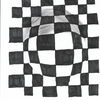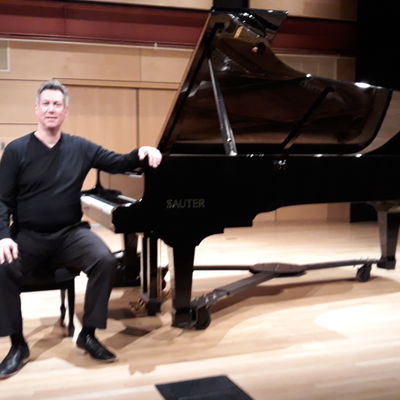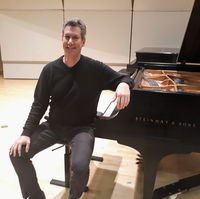

- Bring your own drinks
-
Wheelchair access
- Not wheelchair accessible
-
- Some stairs may be present in the space
This is a groupmuse
A live concert in a living room, backyard, or another intimate space. They're casual and friendly, hosted by community members.
Host
Hi everybody,
I would like to invite you to my house concert/b’day party Saturday, Nov. 2nd at 3pm. Your presence will be this year’s b’day presents.
I will be serving light fare so please BYOB. It would be great if you can make it!
Mark
What's the music?
Debussy - Estampes
Schumann - 3 pieces
Prokofiev - 8th Sonata II & III
Beethoven - Sonata #28 in A op. 101
Where does this music come from?
In Estampes (Prints) Claude Debussy evokes three locales - Asia, Spain and France. The sonorities of the Orient heard in Pagodes were inspired by the Javanese gamelans (percussion orchestras of southeast Asia) heard by Debussy at the Paris World's Fair. The Spanish composer Manuel de Falla commented on La soirée dans Grenade that "although not one bar of this work is borrowed from Spanish folk song, the entire composition, in its most minute details, admirably conveys the character of Spain." Debussy returns to his French homeland in Jardins sous la pluie. Two French nursery rhymes are incorporated in this toccata which was apparently motivated by a sojourn in Normandy one rainy spring day.
The three little gems by Robert Schumann presented here still remain my favorites. The mysterious Prophet Bird, with its series of tweeting tension and releases, still leaves us guessing, while the lovely Romance requires no further description. Delicate, frilly patterns weave the melody, rhythm and harmony into the fabric of the Arabeske, a most poignant piece.
Nicknamed one of the ‘war sonatas’, Sergei Prokofiev’s Sonata #8 is a fine example of his blend of Classical simplicity with Modernistic disquietude. Andante Sognando, a gentle lullaby sprinkled with “wrong note” harmonies, displays Prokofiev’s ingenuity with variation. The final Vivace is a bedazzling spectacle with a zany danse moderne interlude.
The Sonata no. 28 in A Major is yet another example of Ludwig van Beethoven's innovative approach to sonata form. Abandoning the archetypal fast-slow-fast arrangement, Beethoven reserves the weightiest movement for last while the opening movement is tranquil, reflective and ethereal. The second movement is an energetic, quirky march with a curiously transparent, woodwind-like trio section. After a poignant introduction, the third movement, teeming with imitative and fugal techniques, reveals Beethoven defiant and triumphant.
-MV
Location
Exact address sent to approved attendees via email.
This is a groupmuse
A live concert in a living room, backyard, or another intimate space. They're casual and friendly, hosted by community members.
Host
Attendees














 Continue with Facebook
Continue with Facebook
 Continue with Google
Continue with Google
 Continue with Apple
Continue with Apple
Comments (2)
Comment sections are only for participants.